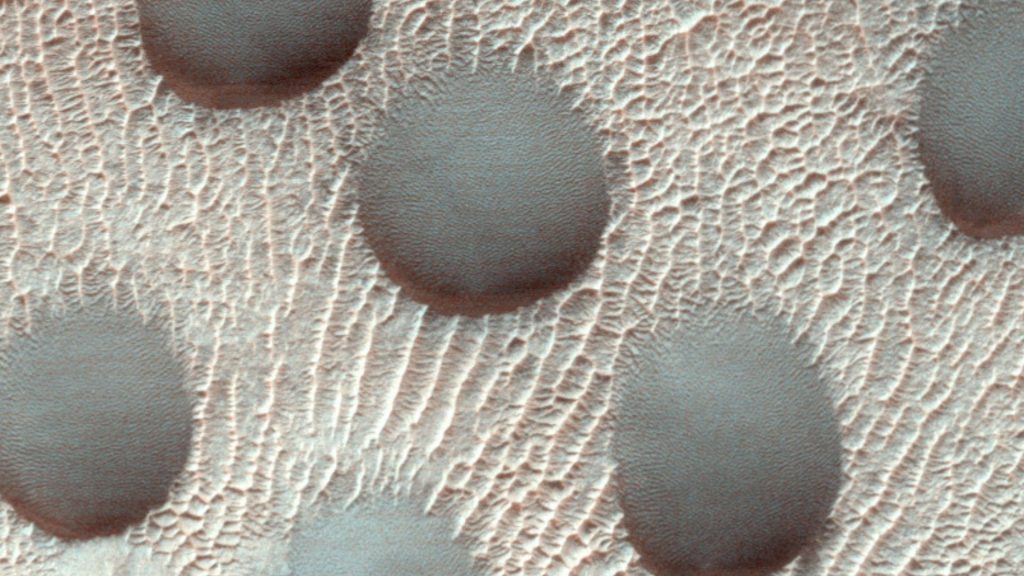Recently, NASA announced that the Mars Reconnaissance Orbiter (MRO) spacecraft, a satellite orbiting Mars, captured an “unusual” image of sand dunes with circular shapes.
The MRO spacecraft’s High-Resolution Imaging Experiment (HiRise) color camera has captured numerous dunes, including the common crescent-shaped ones. However, the dunes in this image were distinctively circular.
Mars’ windy and dusty environment is ideal for developing sand dunes, but circular ones are uncommon.
The MRO captured this image in late November of the previous year using the HiRise camera operated by the University of Arizona.

The absence of frost is evident in the picture, which was taken to monitor seasonal changes in the frost coverage of the region. In a previous image, the surface was seen covered by frost.
“Sand dunes of many shapes and sizes are common on Mars. In this example, the dunes are almost perfectly circular, which is unusual,” remarked planetary geologist Alfred McEwen.
“They are still slightly asymmetrical, with steep slip faces on the south ends. This indicates that sand generally moves to the south, but the winds may be variable,” he added.
There is a connection between our planet and Mars, despite the otherworldly appearance of the Martian landscape in photos. Beautiful dunes on Earth indicate similar to wind and seasonal changes as those on Mars, highlighting the unique beauty of each planet that should be appreciated.
NASA’s Mars Reconnaissance Orbiter (MRO) is an orbiting spacecraft dedicated to investigating Mars’ geologic history and current climate. It has been studying the Red Planet’s atmosphere and terrain with high-resolution sensors superior to the Odyssey orbiter since 2006.
In addition, it serves as a vital data relay station for various missions on Mars.
The MRO has returned thousands of breathtaking images of the Martian surface that are assisting scientists in their understanding of Mars, including the history of water flows on or near the planet’s surface.
It is equipped with a powerful camera- the most powerful high-resolution camera ever sent to Mars- called HiRISE that has helped in a number of discoveries.
MRO offers unique insights into the origin and evolution of the planet by enabling scientists to contrast the factors that shaped Mars with those that shaped the Earth.
Its discoveries aid in the understanding of how and whether Earth could experience the same fate as this Earth-like planet, which went from being a habitable world to a wasteland.


